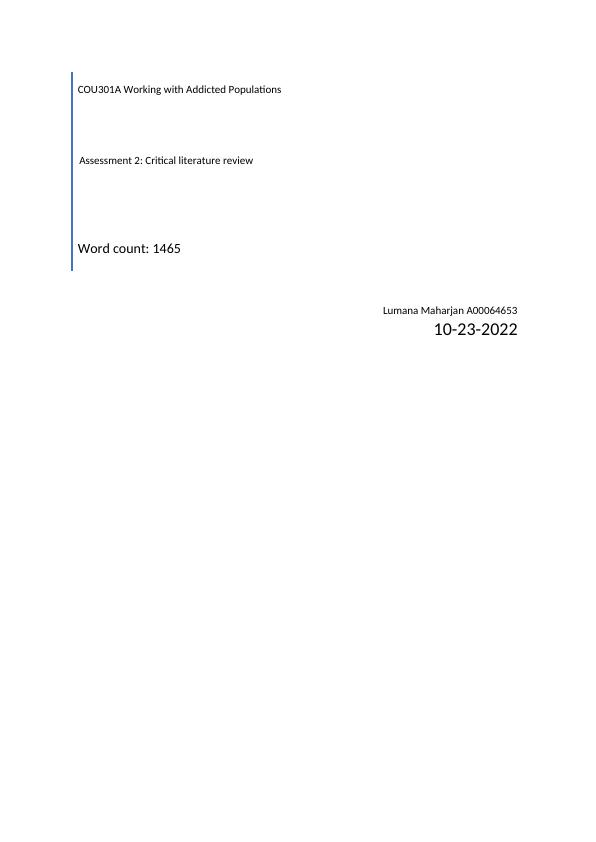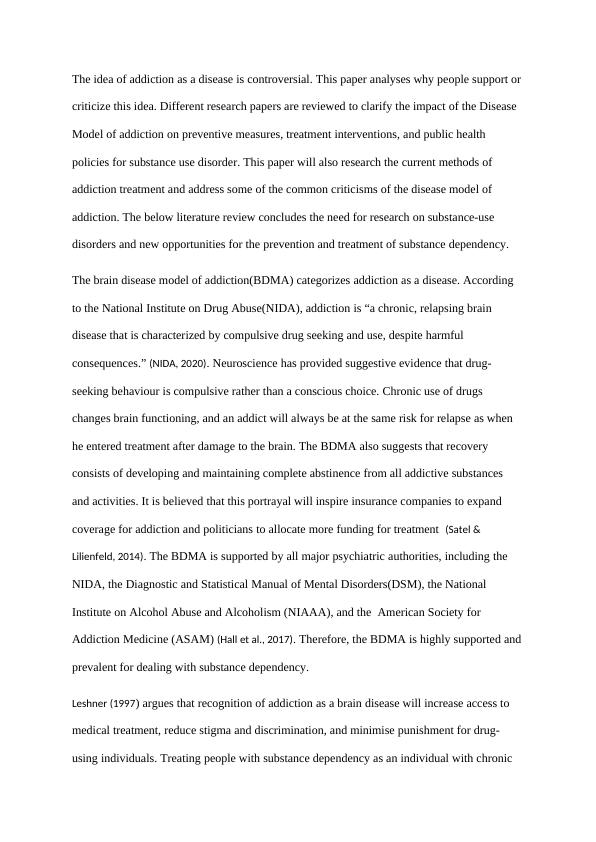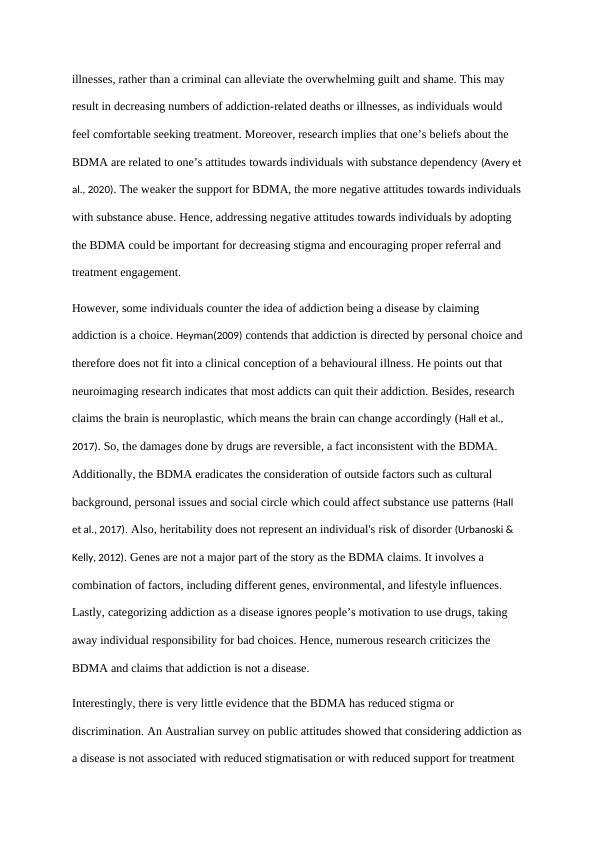Addiction as a Disease: A Critical Literature Review
8 Pages2375 Words20 Views
Added on 2023-01-24
About This Document
This critical literature review analyzes the controversy surrounding the idea of addiction as a disease and its impact on preventive measures, treatment interventions, and public health policies for substance use disorder. It examines different research papers to clarify the arguments supporting and criticizing the Disease Model of addiction. The review concludes with the need for further research on substance use disorders and new opportunities for prevention and treatment.
Addiction as a Disease: A Critical Literature Review
Added on 2023-01-24
ShareRelated Documents
End of preview
Want to access all the pages? Upload your documents or become a member.
Addiction: A Disease or a Choice? A Rogerian Argumentative Approach
|6
|1590
|132
Effects of Alcohol and Drug Use Among Youths
|8
|3494
|90
Drug addiction Assignment PDF
|13
|4252
|115
Caring for People Withdrawing From Drugs/Alcohol Report 2022
|4
|757
|18
Alcohol and Substance Abuse: Pathophysiology, Signs and Symptoms, Treatment and Aboriginal Factors
|22
|1441
|245
Intensive Treatment of Addiction: A Case Study in the Rehabilitation Process
|3
|450
|71



